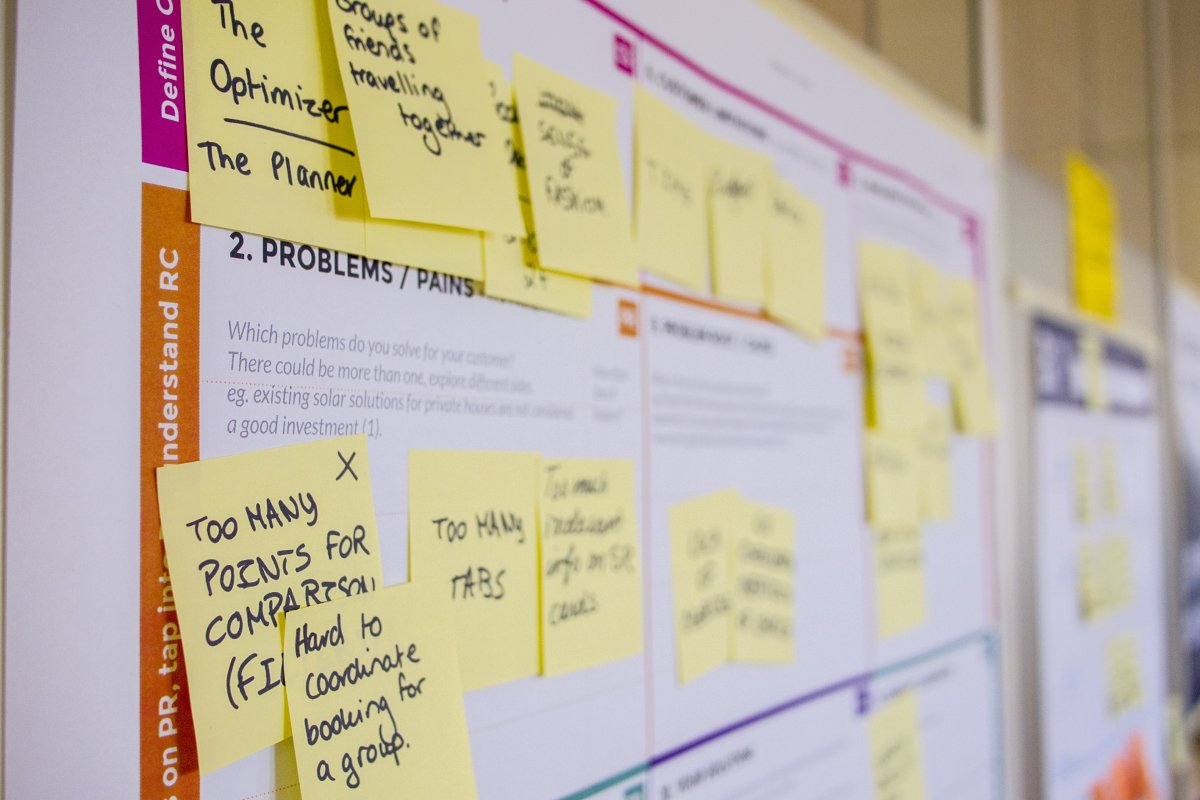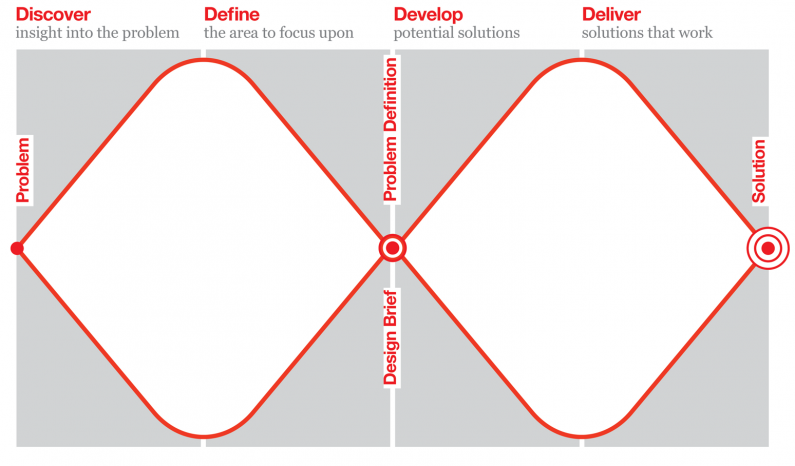Using Digital Ethnography as a research tool for identifying User Personas
Through the lens of the double diamond, qualitative research is embedded in the discovery phase of product and service design.
Although each phase of a double diamond framework is integral to design, the discovery phase will ultimately give your design team the initial direction for user-centred design. Exploratory research plays a significant and impactful role at this stage of design.
Exploratory research (aka Generative Research) allows a UX-team to build a range of ideas, be imaginative, and capture rich contextual insights about the user experience. For the user researchers, exploratory research will more often than not harness qualitative research techniques to uncover new and unknown insights and properties. One critical element of this phase of UX design involves identifying a variety of user personas.
What is a User Persona?
A user persona is the characterisation or grouping of various audience segments that are integral to the success of product design and effective user experience. A user persona is not embedded by demographics like gender, age, and geography. More precisely, the emergence of a user persona comes from the subjective thoughts and feelings of features and capabilities of a new product design. Some users will exhibit the same behaviours and interactions with service design features. Others will display diverging opinions and differing pain points during their interaction with a product or service.
A UX-design team will usually identify personas during the Discovery Phase of Design. The user research will focus on a small subset of users. Techniques adopted for exploratory research to identify user personas can include usability testing, focus groups, and user interviews. However, we are starting to see an increase in preference for ethnographic research techniques by user research and design ops teams.
The double diamond
What is Digital Ethnography?
Digital Ethnography is one of the most widely adopted qualitative research methodologies. This long-established methodology is grounded in anthropology and involves direct observations of a cultural phenomenon. Typically, ethnographic research requires a researcher to observe behaviours, cultural norms, and traditions of a culture or group of people in a community.
Ethnography has evolved over time where it is increasingly being conducted with the use of mobile technology. In fact, mobile ethnography, online ethnography, and digital ethnography are all terms that are used to describe the digital nature of this qualitative research methodology.
This is where ethnographic research has become a go to methodology to help UX teams identify user personas. So what are the benefits of using ethnographic research for identifying User Personas?
Context rich, qualitative insights
Whilst we have mentioned that ethnography is a qualitative research methodology, this cannot go understated. One of the principles of ethnography is the concept of observation. The researcher simply observes and documents the various behaviours and rituals of those they are observing. Observation allows the researcher to immerse themselves into the lives of others. Additionally, the researcher will be able to uncover emerging insights into the what and why of behaviours and experiences. For user personas, they need to be underpinned by qualitative research that will help identify the what and why about user experience.
Flexible research design
Ethnography is not just grounded in field studies and observation of research participants. In fact, ethnographic research is iterative and affords flexibility in research design and strategy. In the context of user research, an ethnographic approach enables you to adopt and integrate a range of qualitative methods into your exploratory research. Diary studies are often built into the research design. For the discovery phase of UX-Design, user diaries are highly valuable. Research participants engage with your user researchers by documenting their experiences, thoughts, feelings and pain points of each interaction with your product or service.
Capture rich contextual insights
Context can result in emergence of unknown and unanticipated user personas. First, what does context mean in the world of user-centred design? Context and contextual insights show us the true user experience. Identifying user personas should involve researchers and design teams seeking to understand the environment, real-world settings, and influences that are embedded in the lives of users. For some, this may go without saying, but UX-teams will quickly build a strong sense of empathy for users when they see the whole picture surrounding the user experience. Where does technology fit into all this?
Digital, flexible research method for User Personas
As mentioned previously, ethnography has evolved with technological advancements. Digital ethnography, or mobile ethnography, is ethnographic research designed and conducted through a range of technological components. The use of video diaries built into the ethnographic design will always reveal the context that surrounds your users. Mobile ethnography aims to bring researchers closer to research participants. To do this, user diaries are integrated into the research design with photo, videos, and text used interchangeably. The visual media that comes from the technological characteristics of mobile ethnography bring context to life for UX researchers.
In addition to this, mobile screen recording features embedded into mobile ethnography significantly improves on the identification of user personas. The digital interactions recorded by your audience segments and research participants will help with the characterisation of a variety of user personas.
To be more clear, empathy is often built through context. Context plays an important role in identifying user personas. Ethnography, through the use of technology and techniques such as, video diaries will draw out rich insights of contextual moments in the real lives of your users.
Indeemo is designed to bridge the gap between UX-teams and users. The interactive platform provides user researchers with the technological capabilities to conduct ethnographic research. Video diary, mobile screen recording, and user journey mapping functionalities are integrated across the Indeemo research participant mobile app, and user researcher dashboard. The design of ethnographic research with Indeemo can be leveraged to identify user personas as they document their user experience in the moment.
Let us support your User Persona research
We’ve supported thousands of user research projects covering everything from mapping the path to purchase for aquarium filters to mortgage buyer journeys to mapping the patient journey of kidney transplant patients.
If you’d like to discuss a specific User Persona research project or are just curious to learn more, get in touch now.





